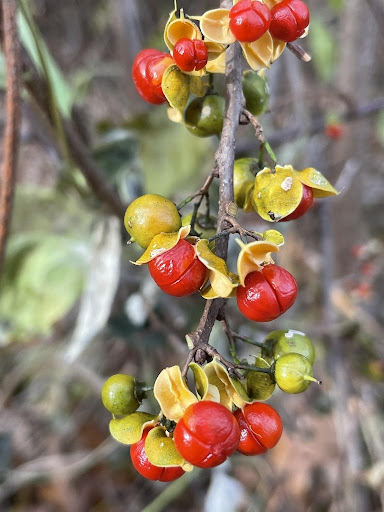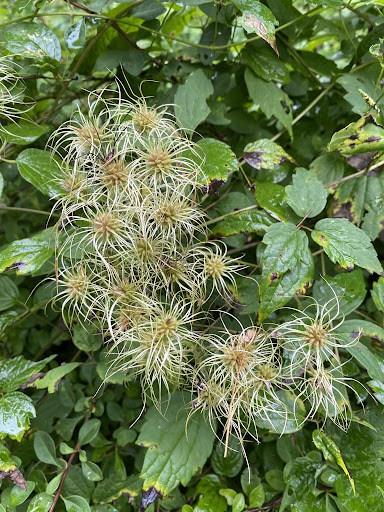Deciduous woody vine or trailing shrub. Can reach heights of over 18 m. Leaves simple, alternate, roundish and slightly toothed. Flowers small and in clusters, with 5 petals, blooming in late spring or early summer. Berries yellow when mature, later opening up to 3 red seed pods. Roots typically bright orange.
Forests, fields, habitat edges and gaps, and even coastal areas. Fast and aggressive growth can completely cover native vegetation which can lead to girdling, uprooting (due to its massive weight), and shading of native species. Fallen, rotting leaves can even change soil chemistry and prevent the germination of native species.
Introduced to North America around 1860 as a decorative plant.

Virginia Clematis (Clematis virginiana) is a native and charming vine with clusters of white flowers.
Vine or trailing shrub, simple, alternate, roundish leaves, berries yellow with three red pods.



Still today, dried flower arrangements and wreaths can contain this plant, so be aware and avoid accidentally spreading its seeds!
Promote the use of beautiful, non-invasive ornamental plants. Encourage government, industry and your fellow citizens to take action to prevent the trade and movement of Oriental Bittersweet. Pull up all roots for seedlings.Cut repeatedly (bi-weekly, especially in the spring) for larger plants. Do not compost pulled and cut plant parts; instead, dry and burn on site (with permit). If you spot this invasive species, report the location to iNaturalist, or directly to the NSISC.